 1 / 8
1 / 8

 1 / 8
1 / 8

Mario Levi is one of the most important and multidimensional characters of contemporary Turkish literature. Also a communication coach. Levi worked in a variety of sectors including radio broadcasting and journalism and his novels reached a great level of success. We are more familiar with him thanks to his works looking at Turkey’s recent past from minorities’ viewpoint, and containing various autobiographic elements. We talked to Levi about his less well known area of interest, i.e. his fountain pen collection.
How did your interest in pens emerge? Is it around the same time you discovered your passion for writing or before that?
It is hard to tell when it exactly emerged; but I know when I started writing. It was in 1975-76, in the very first year of college. Then I had to go through a very long period of struggle to be able to write those things I wanted to write. I am still not sure to what extent I have been successful at covering them all; but at least that hope is still alive in me. Fountain pens entered my life around my high school years. It was not that I did not enjoy writing. But it seems I started to systematically write with fountain pens and to prefer them to other methods around late 1980s; or maybe around early 1990s. For instance my first story book ‘Not Being Able to Go to a City’ was written with a fountain pen. ‘Jacques Brel’ was published in 1986 and was written with a variety of pens; fountain pens were not yet part of my life. But in the years that followed, ‘Madame Floridis May Not Return’ (1991) or ‘Our Best Love Story’ (1992), all these were written with fountain pens. As I kept writing my curiosity in fountain pens kept growing. I emerged as a collector in the sense of the word around mid-1990s. Then fountain pens and notebooks became an indispensable part of my life.
For you, which pens become “collector’s item”? If you compare first-hand pens with the second-hand ones, which one is more attractive?
Of course if you look at it from a collector’s point of view, rare pens or those pens you may find only in very few people’s collections fit this logic. We call these pens ‘Limited Edition’. Some are released in 1000 copies, others in 1500-2000 and do not ever come out again. These pens gain more value as years go by because there is no more supply and some are destined to get lost or to disappear. Their values increase as their numbers decrease. This is valid for all collections, including stamps and postcards. But for me it is not the only aspect of it; what matters to me is that this pen is alive and has a memory. In other, more “author-like” words, it matters to me that the pen has a ‘story’. That it has an aspect worth being told. For instance, if I tell you that I wrote my novel ‘Istanbul Was a Fairy Tale’ with this pen nd I wrote ‘Our Best Love Story’ with this other pen and ‘Leaving Was Part of the Game’ yet with another pen, for me, these pens are precious items in my collection. What is more, there are very few writers like me who write with fountain pens. Currently, most authors prefer writing directly on the computer. But I still write all my novels on notebooks and with fountain pens like the older generations.
Currently, most authors prefer writing directly on the computer. But I still write all my novels on notebooks and with fountain pens like the older generations.
A pen collector like you must also collect various other accessories like ink, inkwells and casings. What would you say about it? I assume we cannot always reach a fountain pen set in its integrity.
Actually I do not like the idea of sets. If we understand the set as something beautiful and attractive with a fountain pen, a regular pen, and a roller all placed in one box and with some ink if necessary, I have to admit I do not like such sets that much. What matters to me is the pen itself. But you are right; some accessories are necessary. There are indispensable ones as well. For example, sometimes a pen’s box is beautiful. It must be kept in that box; it acquires meaning with that box. For good pens also have great designs. Sometimes if you want to simultaneously carry a few pens, you would need a casing that can carry 3-4 pens at once and those are important. But I can give it all up. The indispensable accessory of a pen that keeps it alive is the ink. You cannot think of a pen without its ink. For me, my relationship to the fountain pen acquires a further meaning, for I prefer various ink colors. There are various ink brands and each has different tones. For example Lamy’s green, a high quality German ink brand, is different from that of Graf von Faber-Castell, yet another very high quality German brand. Both are beautiful in their own ways. Pelikan’s green is yet another different one. Why do I say green? Because I always write my novels with green, and occasionally with sepia ink.
How many items do you have in your collection? Which brands have more importance to you?
Believe me, I have never counted them. But they are probably around 50-60, or maybe 100. As I was telling you “a fountain pen without a life means nothing”, I keep in my collection many pens the designs of which I like. I wrote with many of them. Some are kept at a separate place and are still waiting to be used. But the two brands I cannot do without are Cross and Graf von Faber-Castell. I can never give up on them, because a good fountain pen should also write well in addition to a good design. When you write a lot with some pens, the text is occasionally interrupted. But it should slide on the paper, as if skating on it; think about the ice skaters flowing on the ice. I have always used the two brands, Cross and Graf von Faber-Castell, for they have never caused me trouble. They are indispensable for my novels.
And the most precious pen for you?
For me it is the pen with the greatest spiritual value. So I will pick a pen with such value, and not with much economy value, a Pelikan with oblique point, or what we call a horizontal point. For ‘Istanbul Was a Fairy Tale’ was written with this pen, in almost seven years. I have no idea how many bottles of green ink I used. That fountain pen is even a little bit broken. But it is the most precious one for me.
Is it expensive to collect fountain pens? How do you reach the limited-edition ones? Is it necessary to attend fairs and auctions or to reach certain connections and groups?
Such groups exist. Auctions undoubtedly exist too, but frankly I am not interested in them. I embark on discoveries; I have rituals. For instance when I go abroad, there are some fountain pen stores I visit in certain cities; they know me already. I go there and if a new model fits my budget I buy it. Some pens are truly very expensive. Not everyone can be a good fountain pen collector. Believe me when I say this, some pens cost as much as a car does. For only 200 of them are released and they are made of, say, ivory. They are very special. I do not like that kind of exaggeration; it is too much for me to pay sixty thousand euros for a pen. I have no such ambition either. Pens exist that you sometimes can buy at a very high price and in other times at a very favorable price. You see a pen and if it hits you at that moment, it does so; this is momentary. I have pens that I bought from ragmen and flea markets. Some work, others don’t; it doesn’t matter. At that moment I liked them. At that moment I need them to be available. It is enough for me to sometimes look at them and think, and imagine. I also have second-hand pens, although I have always preferred the first-hand ones. Then I imagine. Regarding clubs and relationships, I do not have such a membership but there are discussions. There are fountain pen discussions; these are very beautiful. Then the issue of this pen vs. that pen enters the equation.
You see a pen and if it hits you at that moment, it does so; this is momentary.
Who are the fountain pen collectors that stand out in Turkey?
As I have already told you, there are very few writers using fountain pens. In Turkey, our master is Doğan Hızlan. He is a very special collector. Knowing he will not be mad at me, I will tease him and say I am not as lucky as him. Thanks to his relationships. The only thing I can say is that he has a very extensive collection. And he knows the subject area very well. I remember having visited stationery shops with him in Frankfurt several times and having dedicated a few hours to pens. And then there are some businessmen, for sure; I don’t know them. But I know that some write with fountain pens and that probably have very beautiful pens. For instance Enis Batur and Orhan Pamuk continue to write with fountain pens. I am not exactly sure but Buket Uzuner must also continue to write with pens somehow, because we went to stationery shops in Frankfurt and bought pens together.
You said that some pens are used or not working. Is there a notion called fountain pen restoration? Do your pens go through a special care? Does it require a particular operation or expertise?
My fountain pens occasionally go through little accidents. My savior in that department is İzel Rozental, the owner of Cross. I call İzel and tell him “man, I’m in trouble”, I send him the pen, and he has it repaired at his workshop with his team of specialists. But there are also other pen repairers. Their number is decreasing as well. One or two of them are stationed at Sirkeci, Aşil Efendi Descent neat the Central Post Office. Their shops are like small ambulant shops. Not all of them are that welcoming; some are a bit difficult. But there are still a few reliable masters left; you can trust them with your pens.
How shall we replace the ink?
It is a very meticulous job. First of all you must use tepid water. The point shall be held under tepid water several times. Soap and detergents must be avoided at all costs. For they block the channels. If the point and the pump will be held in water for a short while, you may add one single drop of dish soap in half a glass of water, but only one drop.
How long does a pen live?
Cross provides lifetime warranty. A good pen has years of warranty.
Have you ever exhibited your collection or do you intend to do so? Do you think of donating it to a museum in the future?
No, I haven’t and I don’t intend to. But regarding donations… You never know if you can give up on something or not. I can only talk with my current state of mind now. I think I can hardly give up on my fountain pens. But I am not sure if I will donate them in the future. Maybe if some day, after I leave this world, someone will think about building a tiny, modest museum for me, then those fountain pens will probably become valuable pieces at that museum. There are people who will stay in this world after me; my wife and my three daughters. If they are interested in keeping them, they will. If not, they can be donated to an institution that will care about them, of course.
Are there any other interesting objects that you collect? I guess you also collect LPs?
I try to build a painting collection, again with a modest scale that our budget allows. On the other hand, as music has a very important place in my life, I have an LP and CD collection you may again refer to as modest. These LPs have approximately the same age as the years when I started writing, or even a bit earlier, my high school years. You already know that there was only the LP and the tape cassette back then. And those large, open tapes. The CD did not exist yet like it does today; that technology came much later, and the mp3 came even later. These LPs were very hard to find in those days when I was collecting them. In Turkey they were seldom to be found. I bought them either when I had the chance to go abroad or I literally begged other people who went abroad to bring me some. This collection was built with great passion. I have some LPs that are very hard to find nowadays; some LPs with the French chansons are probably impossible to find even in France. I enjoy it a lot. The same logic holds here; life experience counts. Owning it and keeping it at a corner doesn’t. Saying “I have this as well” doesn’t. In that case the collection has no meaning for me. For instance take a painting; you connect with it. You look at it; you ‘converse’ with it. Without that conversation, having that painting hanging on your wall has no meaning. The other way becomes a sort of power demonstration, to say “I have this as well”. I don’t see collections from this viewpoint.
Any recommendations in collecting fountain pens for beginners?
Let them do as they wish. But first of all they have to enjoy writing with a fountain pen. If they do not enjoy it let them stay out of this business; this is a matter of love. For it is not easy. These days you buy a roller or a pen and you throw it away when the ink is consumed. This is not like that. Here you have to make an ink refill after every 8-10 pages. After that you have the point-cleaning ritual. These are all pleasant. If these don’t exist, stay out of this endeavor. That is why I recommend beginners to start by buying a few modest fountain pens. Nowadays we also have great stationery shops. They have amazing pens. They can upgrade their status with those pens when their budget allows for more. And if they taste that pleasure they will already start pursuing many pens like I did. They would try to discover who own which pen and would try to acquire a similar one. They would start visiting ambulant shops and flea markets. On Sundays there are many of them in Kadıköy, right above the bazaar; they sell typewriters and fountain pens. They are old but there is a life experience. You may suddenly come across great pens when you expect it the least.
This interview is conducted by İpek Yeğinsü and Güliz Özbek Collini on behalf of Art50.net for TEB Private.



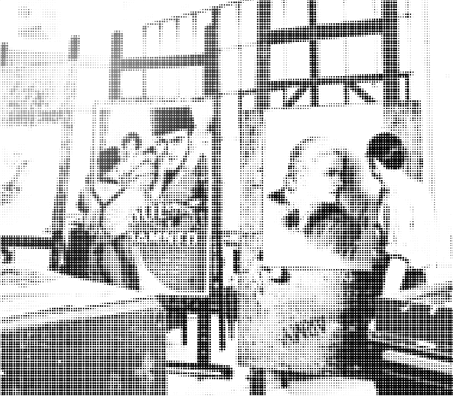



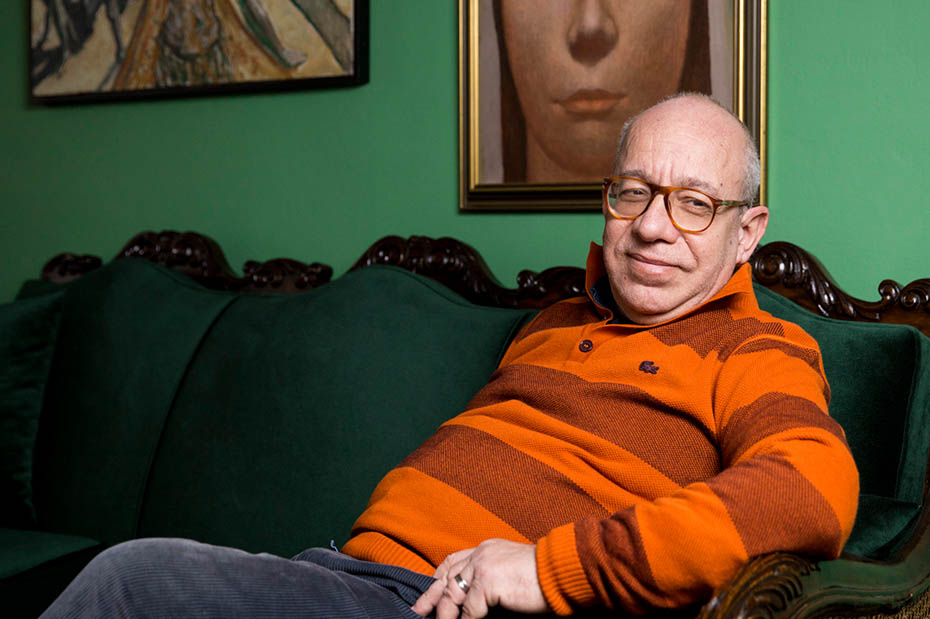
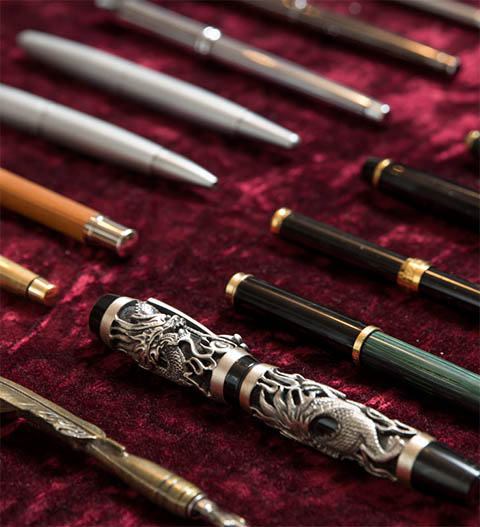
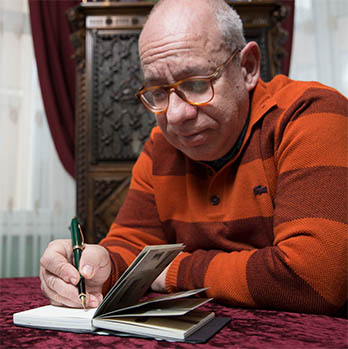

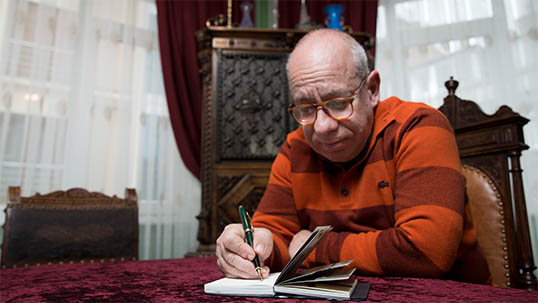
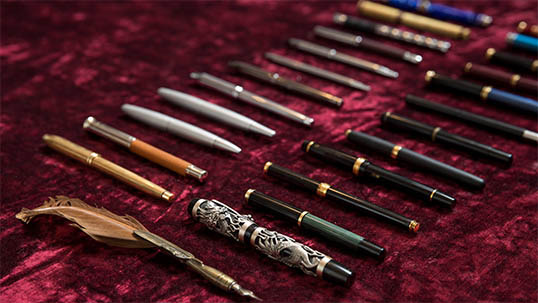
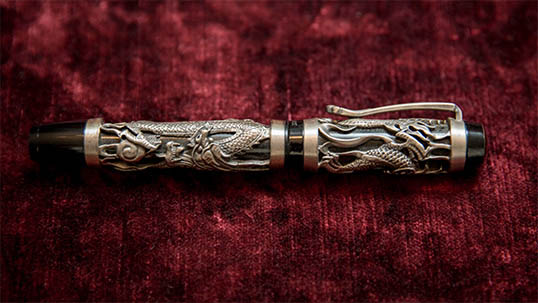
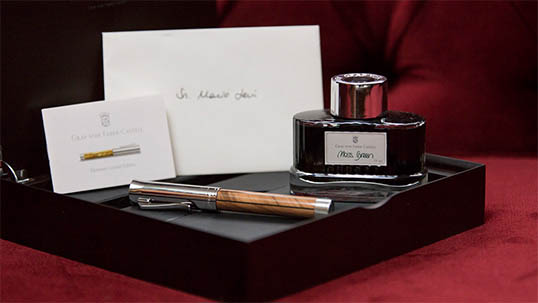
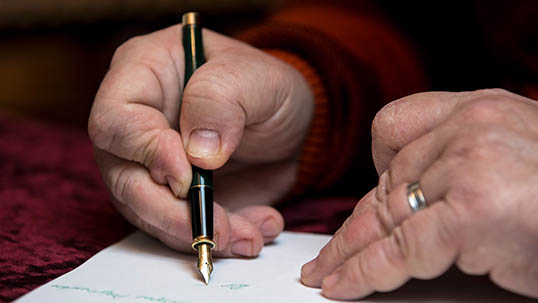
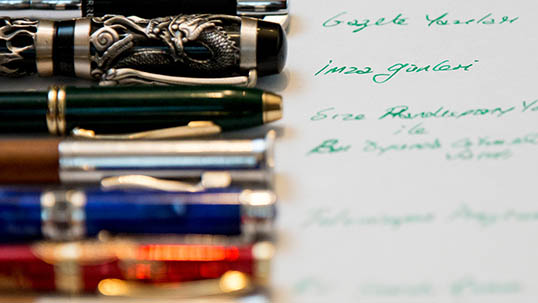
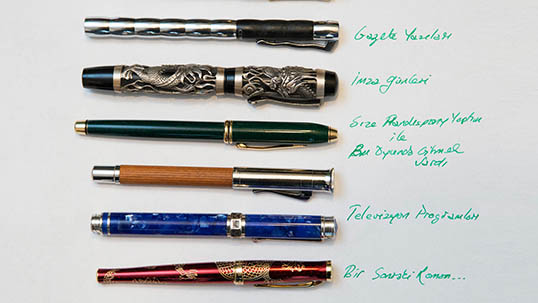
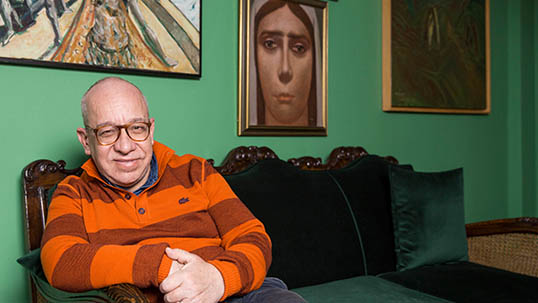





 UP
UP


